Why does PVC turn yellow? You may never have understood these 3 situations systematically
Anyone working with PVC knows that yellowing is a major problem that cannot be avoided.
Yellowing of pipes, dirtiness of sheets, graying of cables…not only affects appearance but can also impair performance.
But do you know why PVC yellows? And how can it be effectively prevented?
Today, we’ll provide a comprehensive analysis of the yellowing mechanism, prevention and control measures, and testing methods.
▶ Root cause: High-temperature processing and repeated heating break C-Cl bonds, generating HCl and forming a conjugated polyene structure (a chain of conjugated double bonds).
▶ Color development mechanism: The more conjugated double bonds there are, the stronger the π electron’s light absorption ability, causing the color to deepen from light yellow to orange-yellow to brown-red.
▶ Detection method: UV-Vis absorption spectroscopy: Detect the absorption peak between 250-450nm. Colorimeter: The higher the yellowing index Δb*, the darker the color.

▶ Reaction mechanism:
▶ Accelerated photooxidation: Chain reaction of reactive oxygen species (·O, ROOH) in the high-energy UV-A/B bands of UV light
▶ Cause:
▶ Additional Note: Some low-molecular-weight HALS are also susceptible to decomposition, especially in the presence of acidic substances (such as stearic acid), causing them to discolor more easily.
| Yellowing Types | Key Prevention Measures |
|---|---|
| Conjugated Double Bond Yellowing | Heat Stabilizer + Epoxy Compound + Temperature Control≤180°C |
| Oxidative Yellowing | Primary/Secondary Antioxidants + UV Absorbers + Titanium Dioxide/Coating Shielding |
| Yellowing Caused by Nitrogen-Containing Additives | Using Polymer HALS + Nitrogen-Free Alternatives + Metal Passivators |
PVC yellowing is a “chemical storm” caused by the combined effects of heat, light, and oxygen. To truly control it, we can’t rely solely on a single additive. Instead, we must develop a multi-faceted closed-loop approach encompassing formulation design, additive selection, processing control, and testing mechanisms. Only in this way can we achieve long-term anti-yellowing and stable appearance quality.
Vous pouvez être intéressé
Rallychem Showcased at the 34th Plast Eurasia Istanbul, Co‑creating a Greener Future with the World
2025 / 12 / 08
Why Your Coatings Perform Better with Polyethylene Wax Additives?
2025 / 11 / 19
Why Polyethylene Wax Is the Key to High Performance Printing Inks
2025 / 11 / 18
[Exhibition Invitation] RALLYCHEM · Sincerely Invites You to Attend CHINACOAT 2025
2025 / 11 / 14
[Exhibition Invitation] Countdown to Plastics & Rubber Indonesia 2025 – RALLYCHEM Looks Forward to Meeting You
2025 / 11 / 07



Pour toute demande de renseignements, veuillez appeler
Rallychem se fera un plaisir de vous aider !

+86 13456396233

